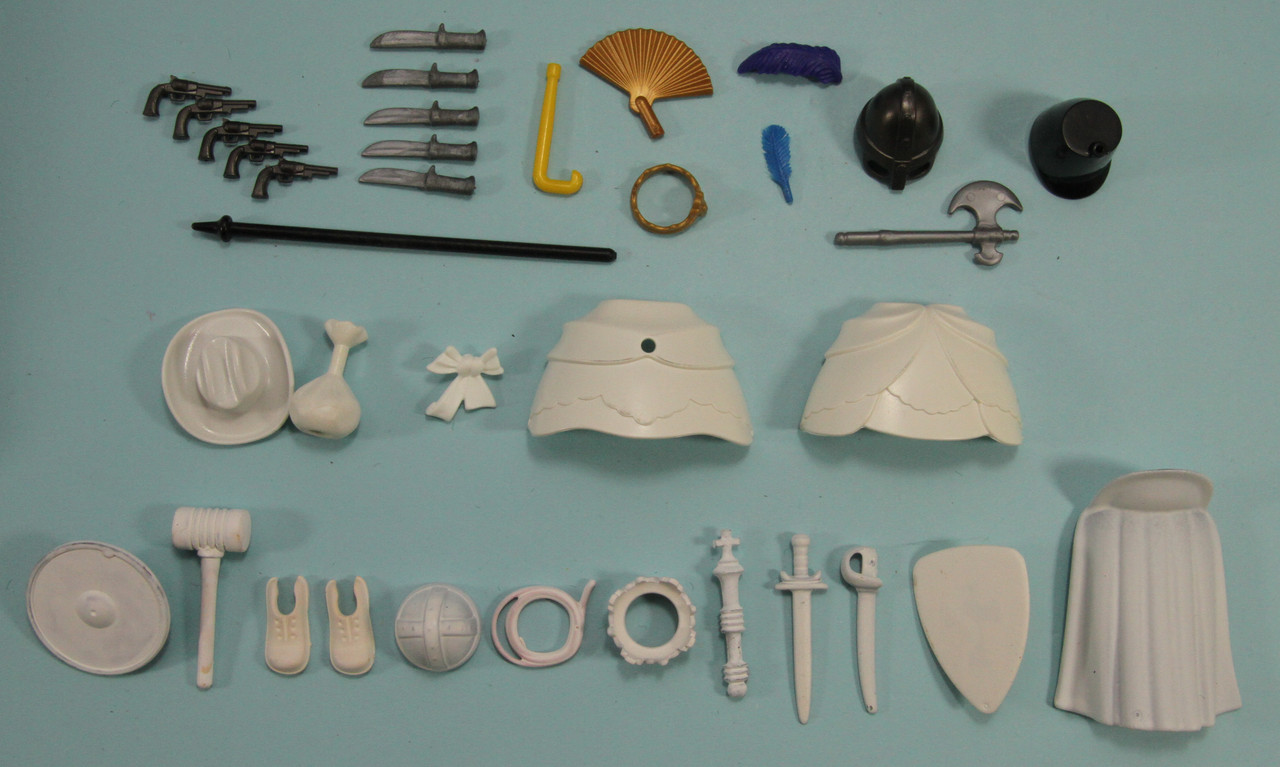As I was assembling the parts of set 3660x (see
here), I researched other Color sets and their contents. This is an abbreviated version of
this page on my website which gives further details about Color sets and parts, including how to clean the ink off and “when-is-a-white-part-not-from-a-Color-set?”
Between 1978 and 1992, 67 ‘Color’ sets appeared in Playmobil catalogues (three-quarters of these in the first three years), but 3 of these were never issued, 5 were DS sets identical to other sets and 3 sets were just colouring pens, leaving 56 unique sets with parts to colour. (A further 17 small, mainly single-klicky sets were issued as giveaways and never appeared in the catalogues).
(Nine sets released recently, in 2023 and 2024, have also been billed as ‘Color’ sets, but I am not including those 9 sets here).
In the early days of Playmobil, when there was very little printing of parts (stickers were used, then injection-moulding techniques which permitted the production of 2- and 3-colour parts, Color sets gave children the chance to create their own customisations of klickies and accessories and to make more elaborate colour schemes and design details in the process.
The klickies (apart from the hair and head) and most accessories were made in white plastic which the owner could colour in with felt pens (aka felt tips, felt-tipped pens, fibre-tipped pens). (Two sets 3621 and 3675 also had paper stickers to colour in). Sometimes the felt pens were supplied with a set, but there were three sets (3600, 3601 and 3602) which contained only felt pens, distributed by Playmobil as suitable for colouring PM plastic.
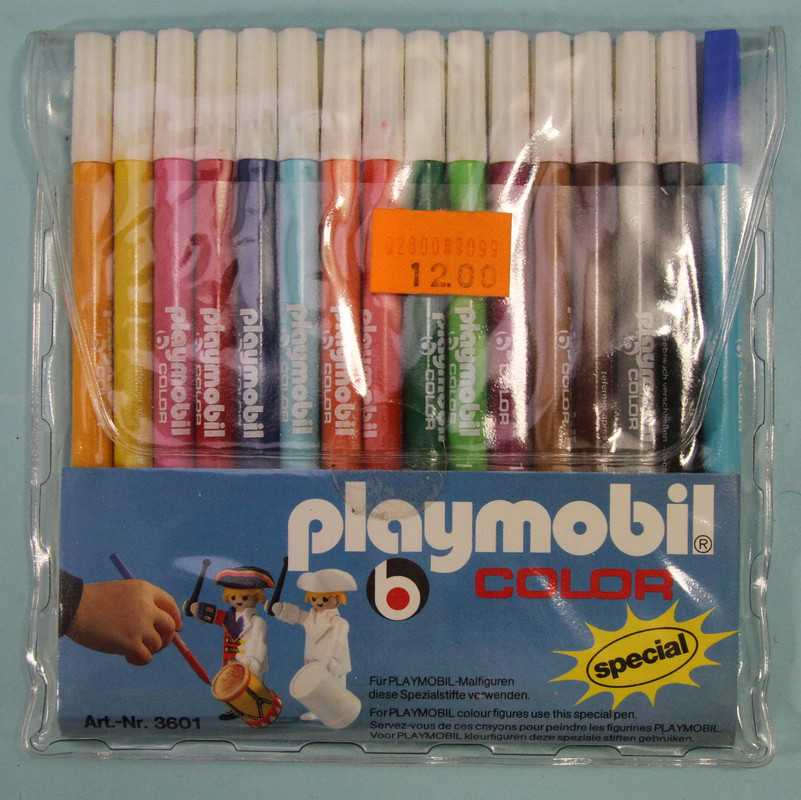
The blue-capped pen on the right was used to change the colour of the ink (or to bleach it away?) once applied to the plastic.
Several people who had these sets as children have commented how frustrating it could be to try to create results like those shown on the box, like this tableware set (3630, later rereleased as 7050).
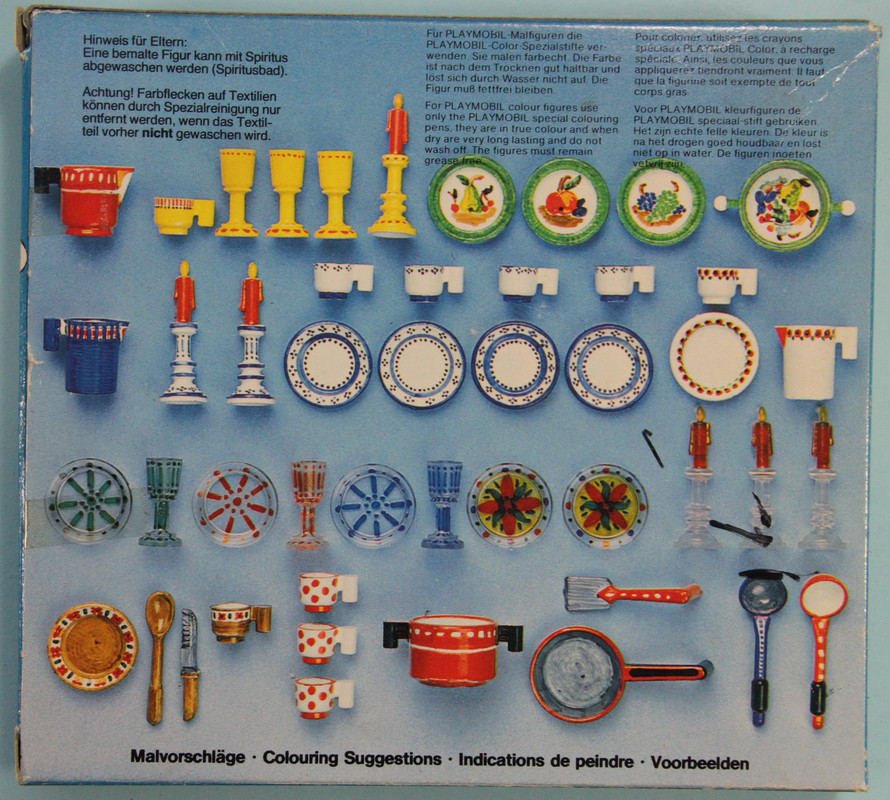
The results, as shown in these figures acquired from eBay sellers (perhaps created by children years ago), could range from impressive to messy:

Another comment by people who had these as a child was how easy it was to break the hands!
Color sets which were never releasedThree sets pictured in the 1980 catalogue are thought never to have been released: 3611x, 3670x and 3656x;

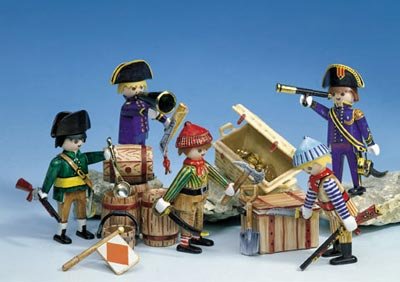
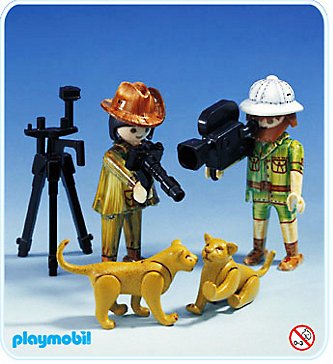 The parts
The partsMost (70%) of the parts in Color sets were made of white plastic, though a few parts came in other colours.
Some parts may exist in two colours in the same numbered set; for example in 3660x some parts shown on the box are white, but in most examples online where set contents are displayed, they are chrome.
Sometimes, earlier examples of a set contain white versions of a particular part and later examples of the same set contain parts in another colour; for example in set 3624 both the small shield and the saddle can be white or black. Perhaps savings were made by including more ‘standard’ parts, rather than creating another batch in white plastic.
Virtually all Color parts have non-Color counterparts made in identical moulds and different coloured plastic. Nine parts however, are unique to Color sets, eight in Indian sets and one for a motorcycle. This includes a maggot-like papoose, the first Playmobil baby!
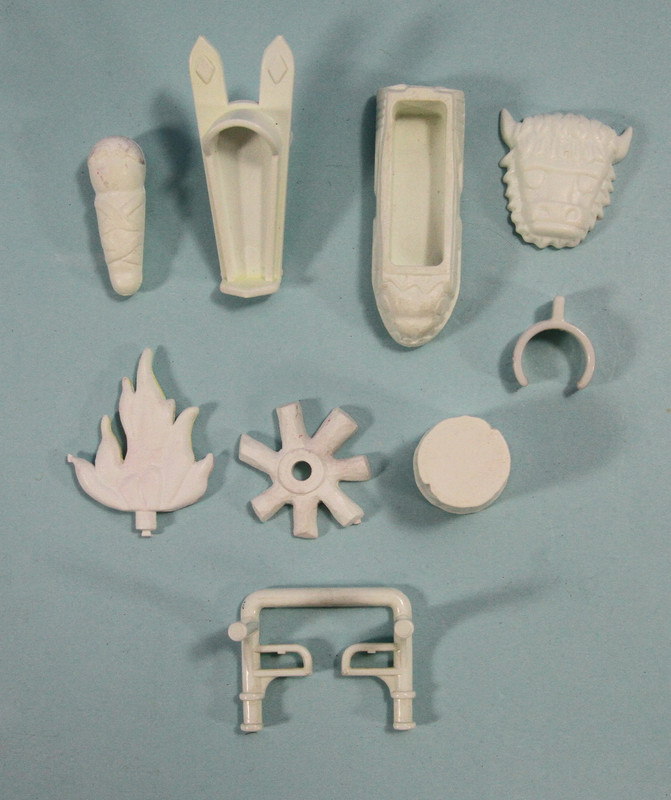
papoose (Indian baby), papoose back board, cradle, Mask for Indian dancers, Facemask with clip to hold Indian mask,
[campfire, sticks in circle with centre hole, flames] these were together on a sprue, bucket (two of these were on a sprue with the cradle)
motorcycle add-on frame for stunt performer- unique to set 3641
Set contentsBecause many of the Color sets are rare (and now quite old), obtaining uncoloured examples is quite hard (or expensive!), MISB sets doubly so. Collectors are (not surprisingly) unwilling to open these sets and display the contents. Sometimes a set is shown inside the original clear plastic bags or cellophane, but it is can be hard to make out what is inside. So, frustratingly, the exact contents of some Color sets is difficult to determine, or at least open to dispute- I found this especially true for set 3660x when I tried to build up the complete set.
I created photographic and PDF inventories for each Color set (
here) and a spreadsheet
here to summarize what I could determine as the contents for each set, ignoring the pens-only sets.
Using what pictures I could find, especially box art, I established there were about 486 different parts and 28 klicky parts used in the 61 Color sets. I managed to get hold of most of these parts (cleaning off old felt pen ink in most cases), but for about 37 parts (marked P on the set contents photos), I had to spray similar parts white. Some parts also had to be photographically duplicated (using Photoshop® and marked PS) where I did not have enough.
Giveaways and GimmicksWatching what is offered on eBay revealed the existence of 15 small sets which fit in the Color theme. They were probably promotional items (‘give-aways’) but now command high prices (50 to 70 Euro each). All 15 sets have a single figure with a few accessories. All have free wrists, suggesting they were issued after 1982.
• 5 sets were issued in the UK (judging by the address on the card enclosed with each set): a pirate, a knight, a king, a cowboy and a clown, all with white accessories
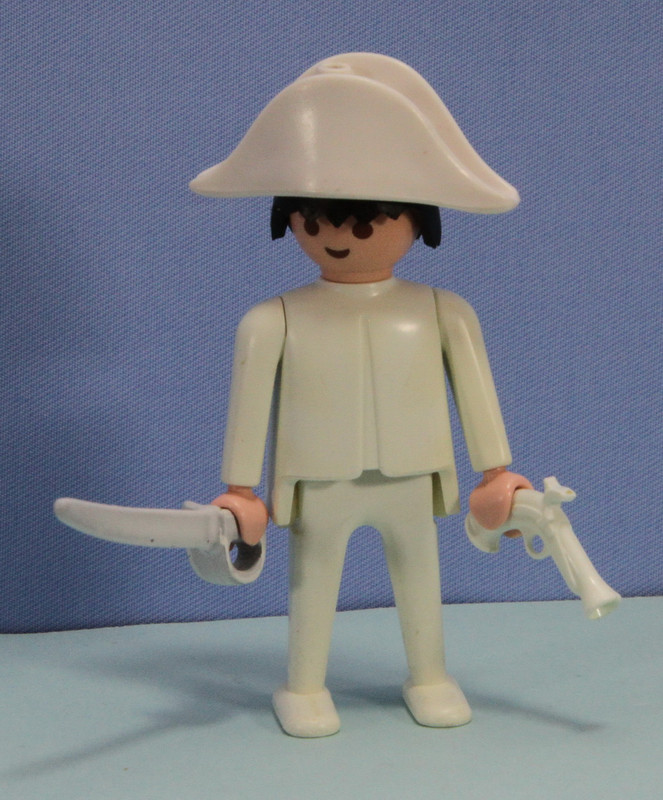

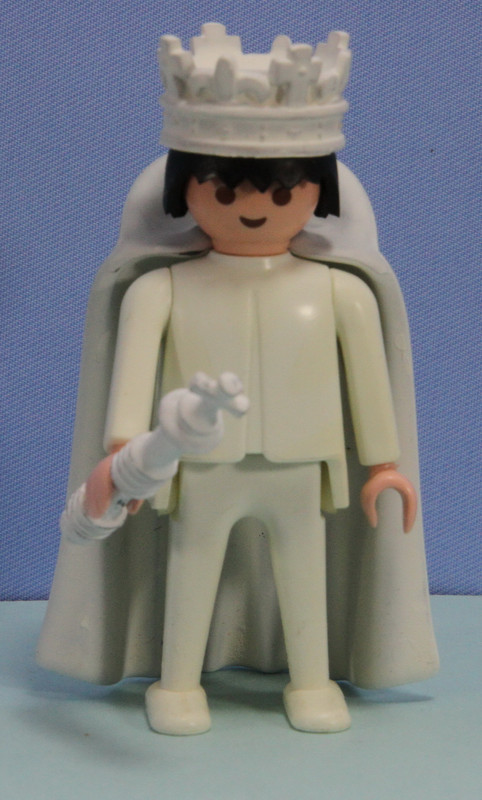
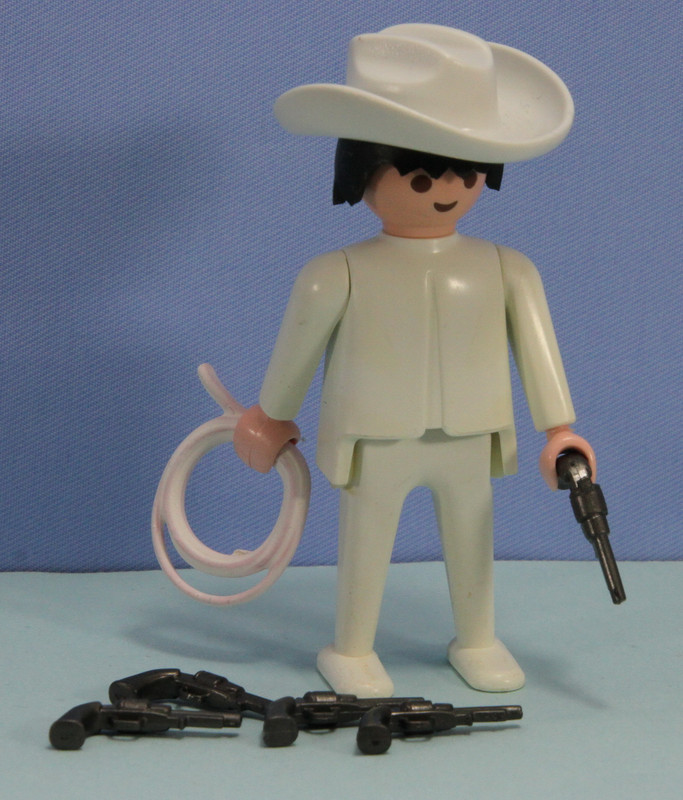

• 6 sets were issued as a single klicky with mainly white parts and a few non-white parts; a farmer, a camerawoman, a knight, a guard, a pirate captain and an Indian.

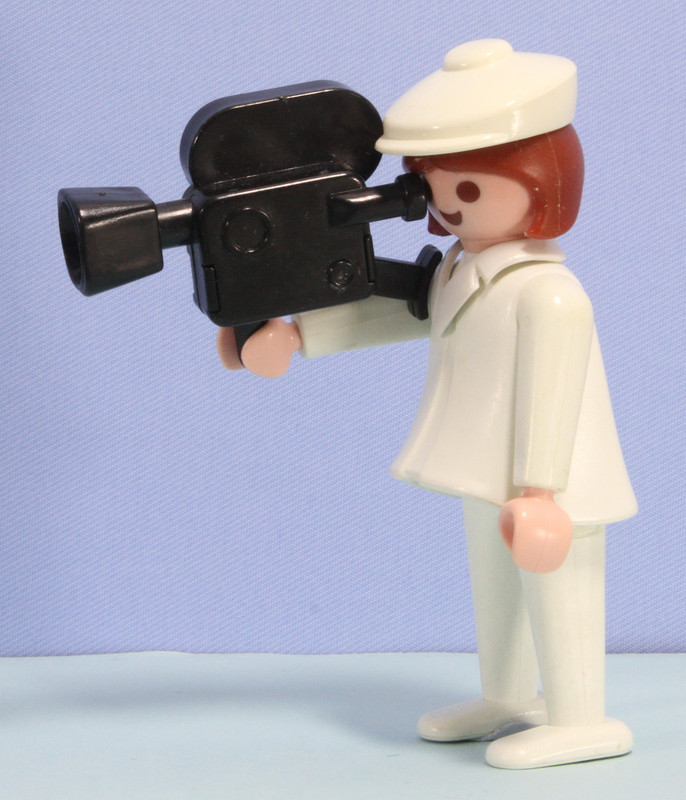
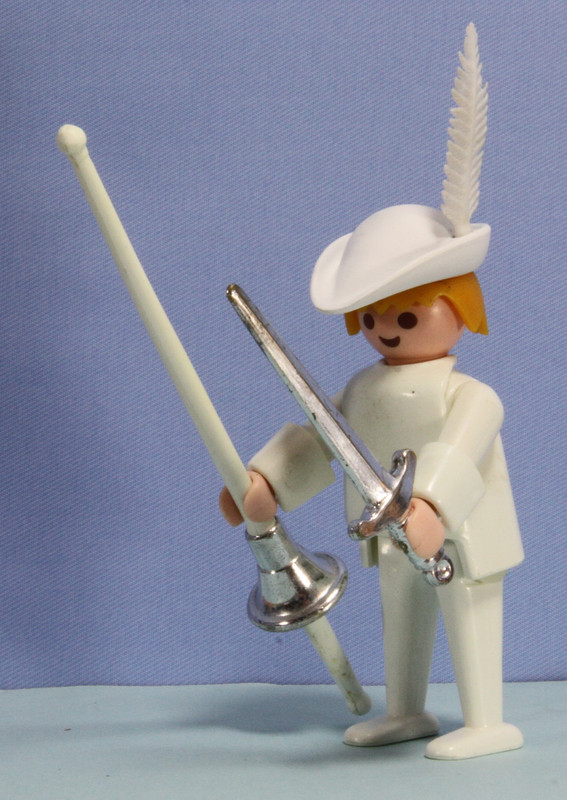
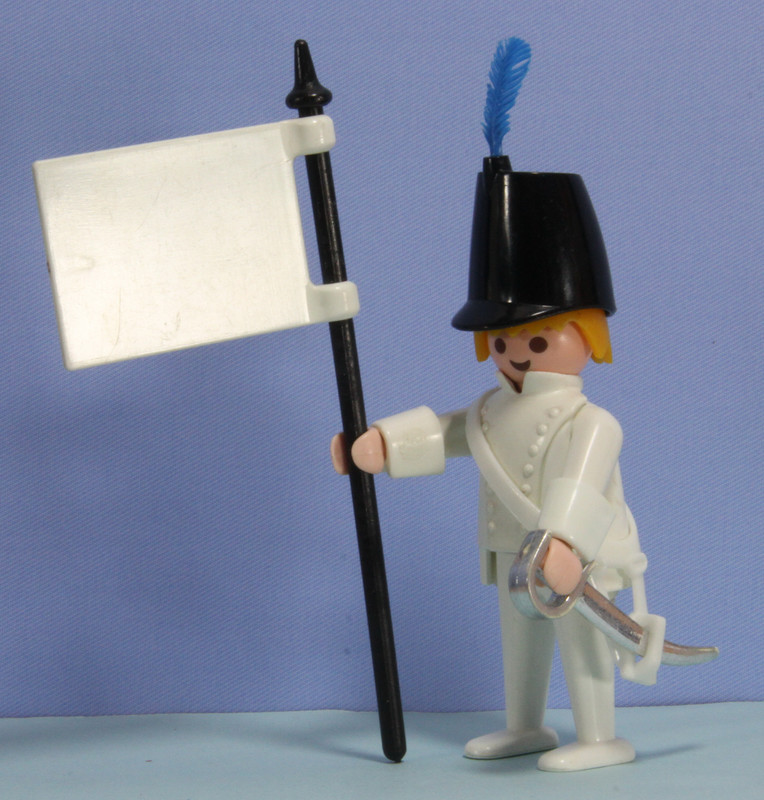
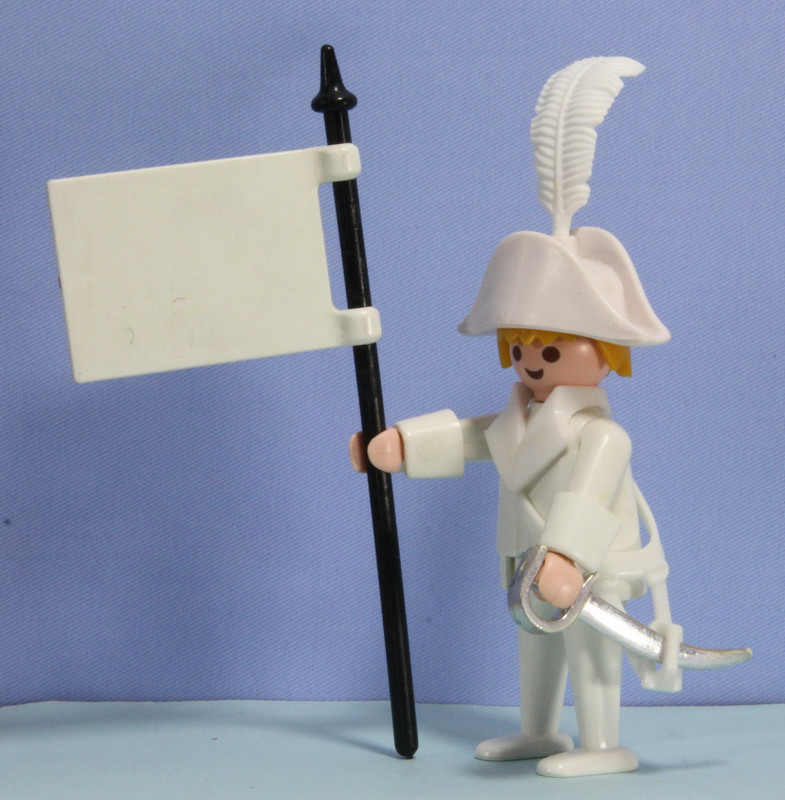
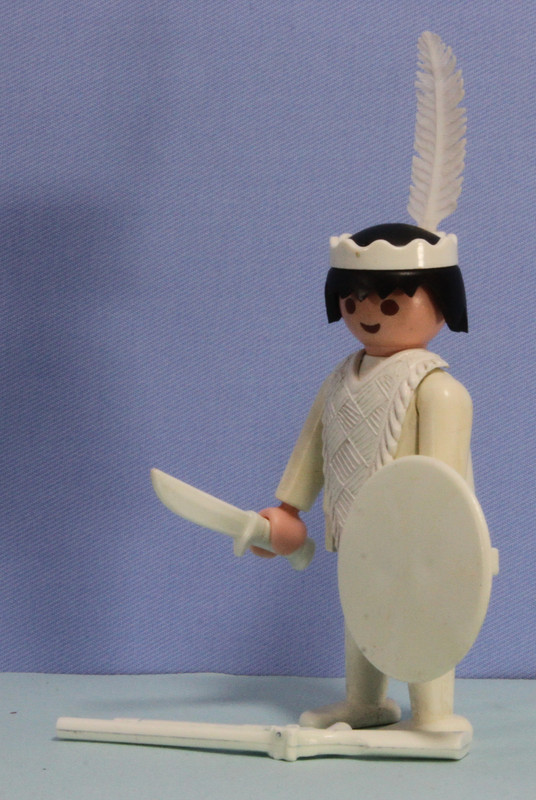
• 4 sets were issued as a single klicky with a mixture of white and non-white parts and accessories; a viking, two different pirates and a lady with a hoop skirt,
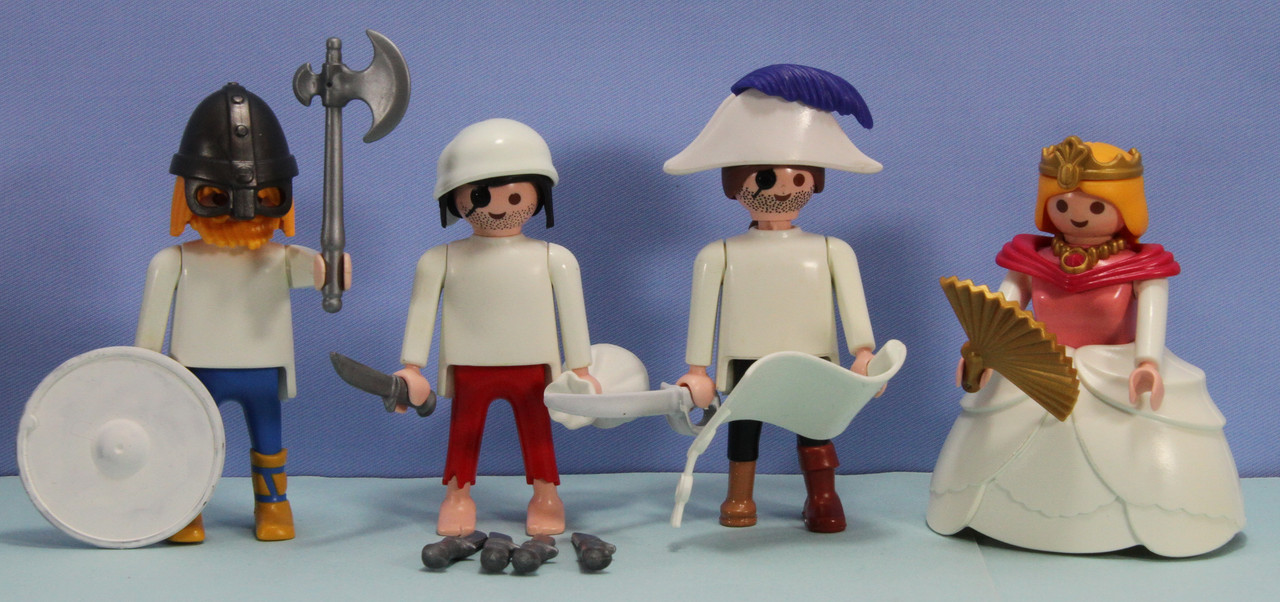
Two further sets were free gifts (‘Gimmicks’) with German YPS magazines, a naval captain with fixed wrists and a cannon. The cannon was supplied with the wheels and axle separate.

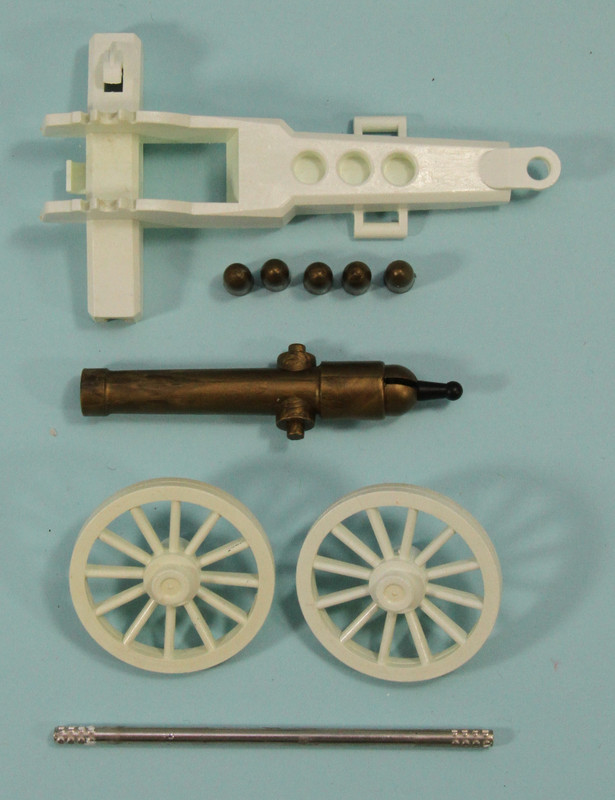
13 white and 12 non-white accessories and 3 klickies in these sets are not found in the ‘main’ color sets. I made the 12 parts shown on the bottom row in the picture below by painting ‘standard’ parts white.
